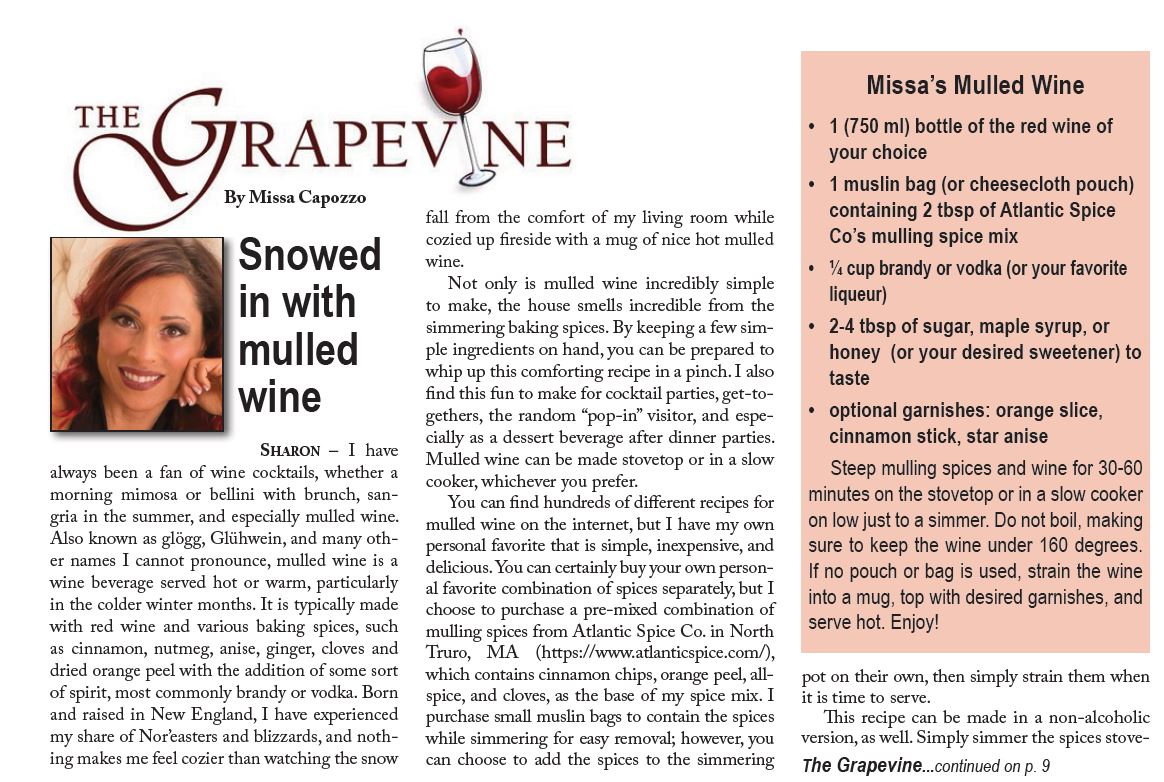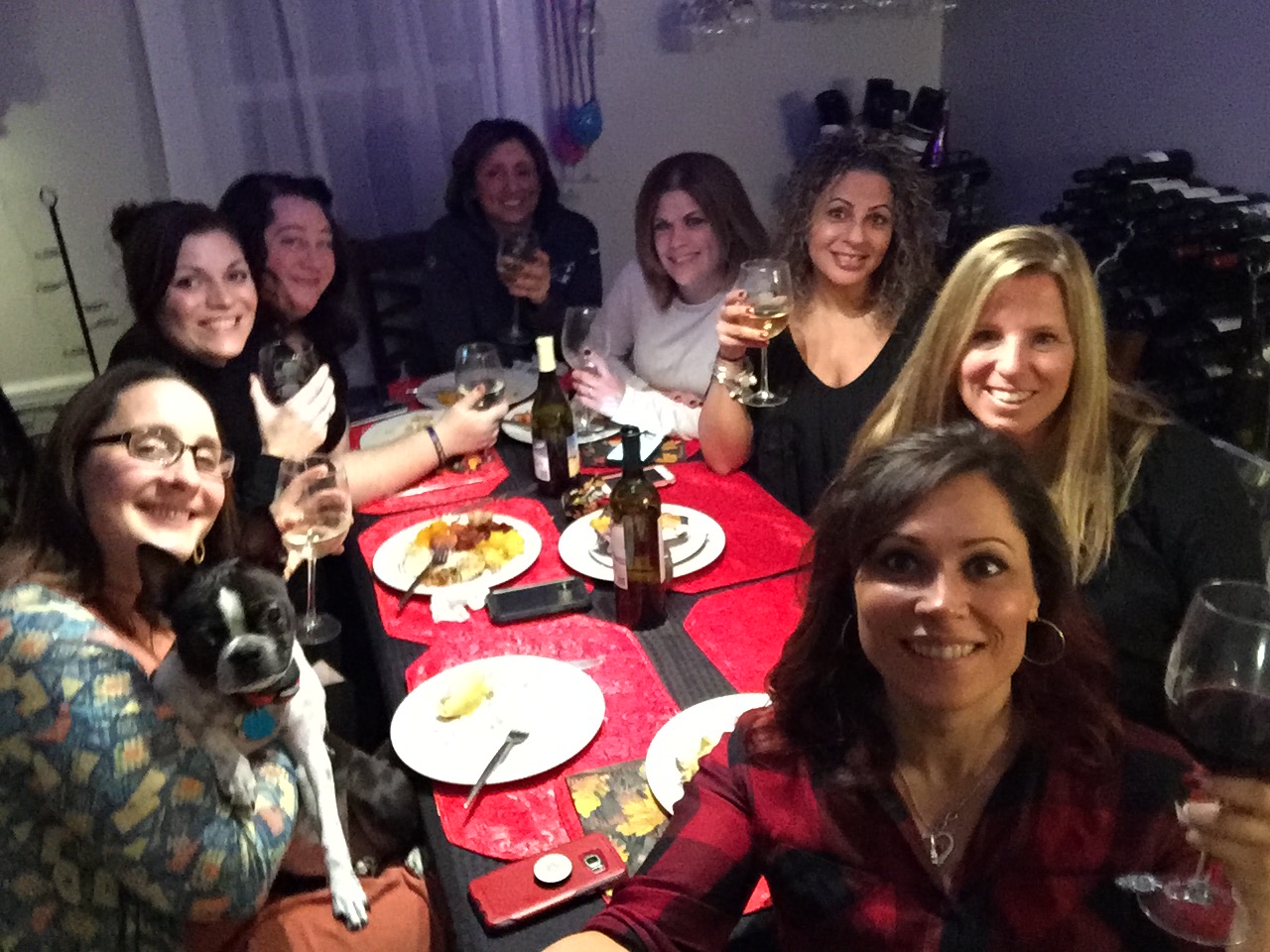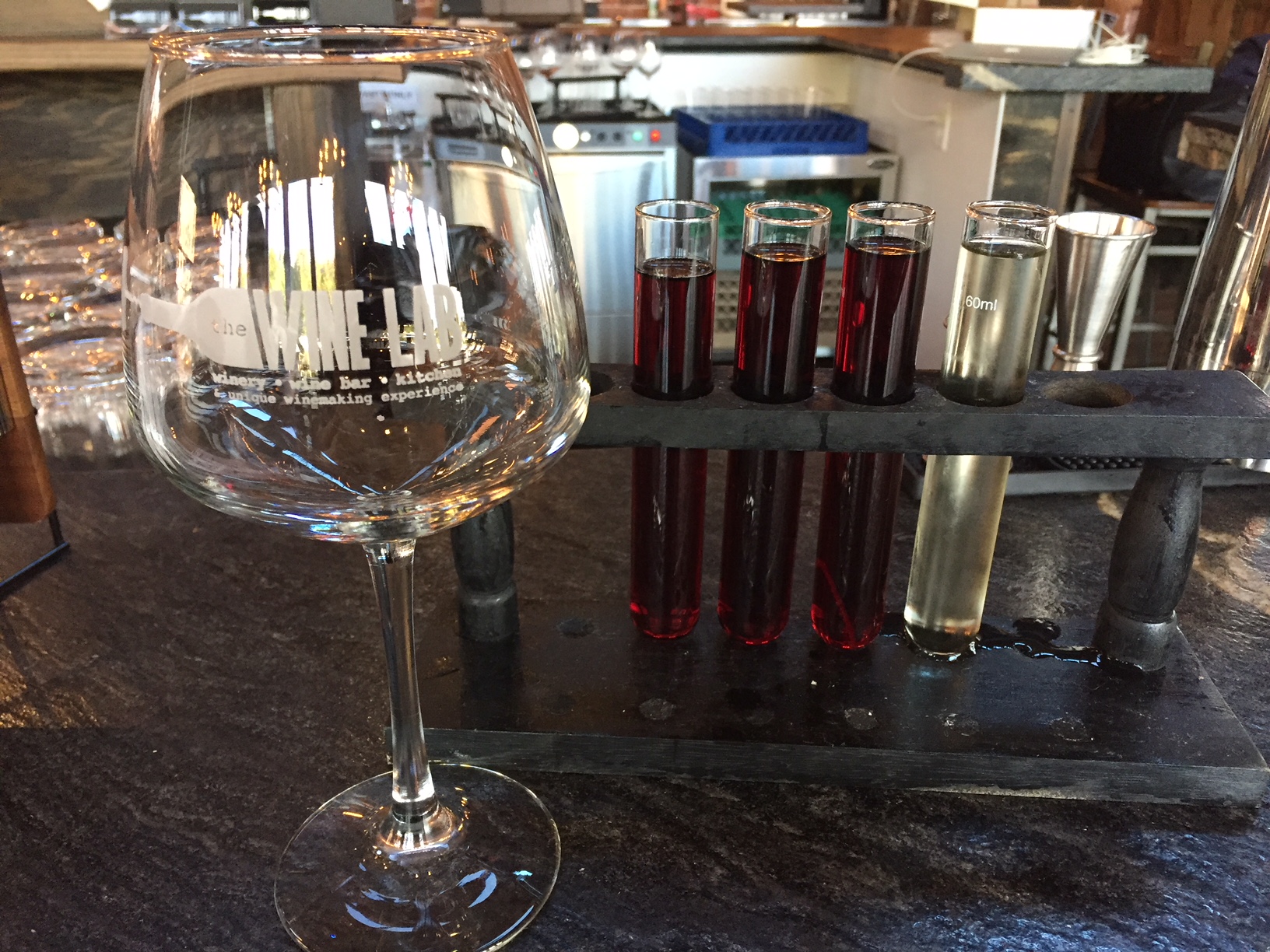Originally published in the South Shore Senior News, January 2019
I have always been a fan of wine cocktails, whether a morning mimosa or bellini with brunch, sangria in the summer, and especially mulled wine. Also known as glögg, Glühwein, and many other names I cannot pronounce, mulled wine is a wine beverage served hot or warm, particularly in the colder winter months. It is typically made with red wine and various baking spices, such as cinnamon, nutmeg, anise, ginger, cloves and dried orange peel with the addition of some sort of spirit, most commonly brandy or vodka. Born and raised in New England, I have experienced my share of Nor’easters and blizzards, and nothing makes me feel cozier than watching the snow fall from the comfort of my living room while cozied up fireside with a mug of nice hot mulled wine.
Not only is mulled wine incredibly simple to make, the house smells incredible from the simmering baking spices. By keeping a few simple ingredients on hand, you can be prepared to whip up this comforting recipe in a pinch. I also find this fun to make for cocktail parties, get-togethers, the random “pop-in” visitor, and especially as a dessert beverage after dinner parties. Mulled wine can be made stovetop or in a slow cooker, whichever you prefer.
You can find hundreds of different recipes for mulled wine on the internet, but I have my own personal favorite that is simple, inexpensive, and delicious. You can certainly buy your own personal favorite combination of spices separately, but I choose to purchase a pre-mixed combination of mulling spices from Atlantic Spice Co. in North Truro, MA (https://www.atlanticspice.com/), which contains cinnamon chips, orange peel, allspice, and cloves, as the base of my spice mix. I purchase small muslin bags to contain the spices while simmering for easy removal; however, you can choose to add the spices to the simmering pot on their own, then simply strain them when it is time to serve.

Missa’s Mulled Wine
– 1 (750 mL) bottle of the red wine of your choice
– 1 muslin bag (or cheesecloth pouch) containing 2 Tbsp of Atlantic Spice Co’s mulling spice mix
– ¼ cup brandy or vodka (or your favorite liqueur)
– 2–4 Tbsp of sugar, maple syrup, or honey (or your desired sweetener) to taste
– optional garnishes: orange slice, cinnamon stick, star anise
Steep mulling spices and wine for 30-60 minutes on the stovetop or in a slow cooker on low just to a simmer. Do not boil, making sure to keep the wine under 160 degrees. If no pouch or bag is used, strain the wine into a mug, top with desired garnishes, and serve hot.
This can be made in a non-alcoholic version, as well. Simply simmer the spices stovetop or in a crock pot with a gallon of cider or juice and omit the wine and liqueur.
Cheers!
Missa
winedowntastings.com




















